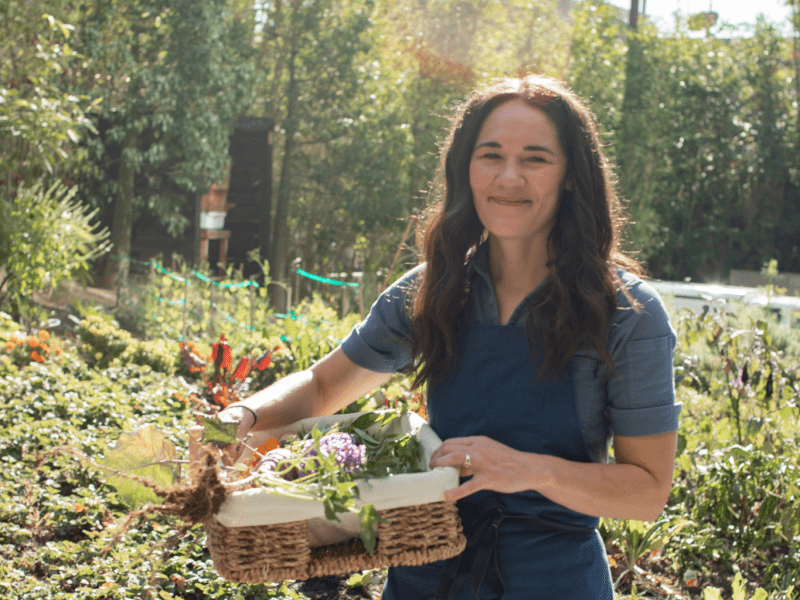Why We Can and Should Reduce Our Reliance on Plastics for a Better Future
With plastic recycling, plastic bans, and plastic-free months—how do you know where to focus your efforts? With a problem as complex as plastics, there’s no single solution.

We’ve arrived at another Plastic Free July, an entire month dedicated to fighting the worldwide plastic pandemic. This month always inspires us to take a step back and ask ourselves, “How did we get here?”
At this point, it’s undeniable that plastic waste is a massive global problem. And honestly, it’s quite astonishing that this material has introduced such devastation in such a short span of time.
You see, plastic is a relatively young synthetic material. Celluloid—the first prosperous plastic material—began mass production only 150 years ago. Since then, so many different factors and events have shaped plastic’s journey. From World War II to the rise of Tupperware and plastic grocery bags, we’ve arrived at a point in time where plastics are produced at a staggering rate of 380 million tons per year.
This should give us some hope that something that got out of hand so quickly can be reigned in quickly too. So… how?
We all must avoid single-use and other unnecessary plastics.
Plastic’s claim to fame started only 150 years ago, which is even more astonishing when you consider the fact that one plastic bottle can take over 450 years to decompose.
Not to mention, it’s estimated that:
- Over the last 30 years, plastic consumption has quadrupled.
- 50% of plastic ends up in landfills, 19% ends up in incinerators, and 22% evads waste management altogether—entering uncontrolled dump sites that eventually pollute delicate ecosystems, usually in poorer countries.
- 30 million tons of plastic waste have entered seas and oceans, while 109 million tons have accumulated in other bodies of water.
Knowing this, it becomes clear that we all must do our part to stop contributing to the plastic pollution problem.
Here's what we're doing.
At 1 Hotels, we’re always maintaining and looking for new ways to minimize plastic usage/waste from every angle—whether it’s sourcing compostable alternatives to plastic or working directly with haulers to ensure our waste does not reach a landfill. To be more specific:
- We’ve already eliminated easy-to-replace single-use plastics across all properties, such as hangers, keycards, cups, bottles, and straws.
- We provide recycled glassware, aluminum coffee pods, ceramic mugs, and refillable bath products in our guest rooms.
- In our kitchens, we use and offer compostable and recyclable equipment and take-away materials wherever possible.
- In our cafes, you’ll find products like overnight oats in mason jars rather than plastic cups. When you dine in, you can feel good about enjoying your plastic-free pick-me-up.
- When sourcing linens and furniture, we prioritize natural fibers and avoid plastics at all costs. You’d be surprised how much plastic you’ll find in household items like these!
We encourage (and hopefully inspire) other brands in the hospitality industry to phase out single-use plastics wherever possible. We’ve always believed in doing what’s best for the planet before it’s required (through bans and treaties), and we encourage everyone else to do the same.
We commend our partners at Pathwater, Bamford, and Foodprint Group for adopting the same mindset and helping us set the stage for positive change in the industry.
What can you do?
Now, what are some things you, as an individual, can do to participate in Plastic Free July and promote a plastic-free future?
- Take inventory. How much plastic are you actually using throughout your day? How much of it is easy-to-replace, single-use plastic? We recommend splitting up your “inventory check” room by room to reduce overwhelm. How much plastic are you using in your bathroom? Your kitchen? Awareness is the first crucial step to making real, lasting change.
- Swap as you go. It’s important that you don’t just throw away products that are packaged in plastic. That wouldn’t be sustainable at all—we want you to enjoy these products thoroughly. As outlined in our previous article, Five Simple Steps Towards a Zero-Waste Home, we encourage you to swap as you go. Once your plastic-packaged honey runs out, replenish it with local honey that’s packaged in a glass jar. Repeat this process for all of your easy-to-replace products packaged in plastic.
- Bring your own. Make yourself a zero-waste kit that you can use on the go. Fill it with reusable bags (produce, grocery, etc.), cups, cutlery, straws, hand sanitizer, and more. Keep it in your car, so you have it on hand for spontaneous outings.
- Master your mindset. Reducing your plastic footprint does not require perfection. We encourage you to adopt the mindset that every little swap counts. We follow this mindset in our hotels, too! Also remember, what’s good for the planet is also good for you. By reducing plastic in your daily routine, you’ll reduce the amount of plastic that reaches your local landfills and water supplies—which means healthier spaces and water sources for you and your neighbors.
- Explore resources to keep the momentum going. Don’t let the momentum stop after July. Continue to learn about the plastics problem and other environmental issues by reading The Field Guide and exploring other amazing resources provided by passionate environmentalists at Oceanic Global, How to Save a Planet, Intersectional Environmentalist, and beyond.
- Choose optimism. While the failures of plastic recycling and the complexity of plastic bans are overwhelming, we encourage you to focus on the positives. In the last few years alone, we’ve seen exciting innovations that have a lot of potential to help us in the fight against plastic pollution. From produce bags made from vegetable starch and oil to new software solutions that automate waste analysis, it’s already clear that when we combine our strengths, we can come up with creative and promising solutions to the plastics problem.
Always remember, it’s never too late to reduce your plastic footprint. Every single purchase is an opportunity to reduce your plastic consumption and set an example for those around you. Plus, we think it’s cool to care and prepare before a new law requires you to.
Plastic recycling is not a realistic long-term solution.
Let’s dive a little deeper into why we should avoid plastics altogether, instead of relying on plastic recycling as a viable solution.
Data has shown that plastic recycling is not the answer, as less than 10% of post-consumer plastic waste is actually recycled around the world. Below are a few reasons why this is the case.
- There are thousands of different plastics, all with different compositions that can’t be recycled together. In many places, a clear PET#1 bottle and a green PET#1 bottle can’t even be recycled together—let alone all of the different HDPE, LDPE, PP, PVC, and PS types.
- The reprocessing of plastics (if possible) is extremely wasteful. With their toxic additives and chemical treatments, many plastics can’t be reprocessed into food-grade or consumer-safe products.
- Recycled plastic costs more than virgin plastic. This deters many companies and consumers, as they won’t see an immediate economic benefit when presented with recycled-plastic options.
Yet plastic companies continue to push the idea that plastic recycling is an acceptable answer, and that there’s nothing wrong with the current plastic production rate of 380 million tons per year.
We encourage you to challenge these messages and consider what the experts are saying—that plastic recycling is not the sole answer, but it’s still a critical component of the long-term solution.
Plastic bans must be carefully considered.
Knowing plastic recycling isn’t a viable long-term solution, it becomes tempting to want to ban plastics altogether.
Plastic bans have played and will continue to play a critical role in plastic reform. But because of the complexity of the plastics problem, we must all acknowledge that there are areas where plastic bans will be effective—and areas where they will likely cause unintended issues.
The truth is, we need certain plastics in parts of our modern society, and eliminating them completely could introduce a myriad of unintended consequences. As an example, lightweight plastics are critical to increasing fuel efficiency in the transportation sector. If we replaced these plastics with alternative materials, would these new materials be more sustainable over the vehicle’s entire lifecycle?Which communities would be most impacted by this swap as a result of the associated emissions, disposal, toxicity, and labor?
This is not to say that plastic bans won’t have their place—they absolutely will, especially for single-use plastics. Take the recent plastic bans below as examples.
- Canada: New regulations prohibit the manufacturing and importing of common single-use plastics such as grocery bags, cutlery, food service containers, ring carriers, and straws. Manufacturing bans will take effect in December 2022, but the law will allow the sale of these items through December 2023 to allow companies to deplete existing stocks. By the end of 2025, Canada will also prohibit the export of six categories of plastics. This world-leading ban will eliminate an estimated 1.3 million tonnes of difficult-to-recycle plastic waste and over 22,000 tonnes of plastic pollution—an exciting model for the rest of the world.
- California: The state’s legislation aims to reduce single-use plastic production while increasing recycling rates. By 2032, all single-use packaging (plastic, metal, and paper) must be recyclable or compostable, the statewide recycling rate must increase to at least 65%, and plastic producers must reduce their plastic packaging by 25%. On top of this, plastic producers are required to donate $5 billion over the next 10 years to mitigate the effects of plastic pollution primarily in low-income communities.
- India: The first stage of this ban makes it illegal to produce, import, stock, or sell 21 plastic items, ranging from straws to ice cream sticks beginning July 1, 2022. While this leaves out thousands of other plastic products, the government has set targets for manufacturers to responsibly recycle or dispose of such products after use. This legislation is a critical step in India’s journey to reduce greenhouse gas emissions in economic activity by 45% over the next eight years.
Don’t forget, the UN Plastic Waste Treaty is still in the works too, and its goal is to outline a global commitment to reducing plastic production and consumption. We’re thrilled that governments are starting to catch on, and we hope that these milestones will inspire the rest of the world to engage in plastic reform as well.
Hang on to hope.
We’re not explaining the flaws of plastic recycling and the complexity of plastic bans to discourage you. In fact, we hope this information guides you in the right direction, so you can focus your time and energy on methods and movements that propel us all forward in the fight against the plastic pandemic.
When we combine personal efforts (on the individual and industrial levels) with bans that prohibit unnecessary plastics while increasing regional recycling rates—we have a well-rounded plan of attack against the global plastics problem.
The solution may not be simple, but it’s still within reach.













